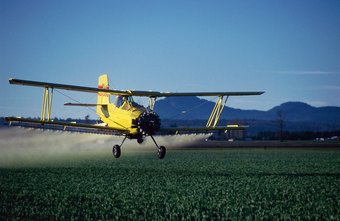
Join our community today and start interacting with existing members. Registration is fast, simple and absolutely free. How to get a job crop dusting? Don’t ask makf why I’m interested lets just say i could never see myself flying for an airline. I find the idea of crop dusting very appealing. Its my kind of flying.
Sponsored Stories
Probable cause: The pilot’s failure to maintain airplane control during the approach and his delayed decision to go around. The Leather Institute, which repairs and restores leather, will begin operations from Flightstar’s facility in mid-summer ASTM is releasing new standards for seaplanes and floatplanes to help determine appropriate water loads that occur during landing, taxiing, and takeoffs. Parks’ bag of tricks included having students build aircraft that were used in the college’s flight training program. In the pantheon of happy accidents that have occurred over the course of my life, becoming a certificated flight instructor is easily in the Top Five. There were three CFIs in the pattern. Two of us were doing it right. One of us was doing it wrong. Heading into winter is a great time to plan for spring when recreational aircraft come out of hangars and take to the warming skies. What came naturally to me, being raised on an airport, is not so natural to the average 3 to 5 year old. Go figure. People will tell you how great an idea is, right up to the point when they have to pull out their wallet. Whether you use paper and pen or a keyboard to log your flights, do you go above and beyond to document the details? Why not? The air is clean and crisp. The morning calm however, is soon broken by a demanding shout. All across the country, on air strips in rural valleys and farmlands, the same procedure is repeated. There are millions of acres that need to be planted, treated, and protected. Before most people have had their first cup of coffee, the men and women of agricultural aviation are in motion doing just that.
Voice of the Aerial Application Industry
About 3, pilots, most in their 50s and 60s, still take part in the storied business of crop dusting. In the past, the demand for their services was greater. As costs of equipment, training, safety compliance and insurance rise, however, crop-dusting businesses find their profit margins squeezed, and farmers are finding more economical ways to apply needed fertilizers and pesticides to their crops. The business can still be rewarding for experienced and energetic pilots. Crop dusting, also known as aerial application, follows a regular schedule. Work can be steady and profitable in the growing season, while during winter there is little to do except equipment maintenance and marketing. The feast-or-famine nature of the business, as well as high startup costs, are discouraging many prospects from entering or training for the field. Aerial application involves flying low and releasing seeds, fertilizers or pesticides over large fields of crops, which are more economical to treat from the air than by using combines, tractors and machinery on the ground. Pilots must be trained in aeronautics, small-aircraft handling, hazardous materials and basic meteorology. Most crop dusters work as independent contractors for small operations working out of rural airports. Others are small business owners, working solo or with a few partners.
Duties and Responsibilities
One of the most overlooked jobs in the aviation field is that of a crop dusting pilot. When most people think of crop dusting, they picture a grizzled old man in an ancient biplane, flying low over a field in Illinois. He appears suddenly on the horizon and disappears almost before you have the chance to register him. Read on to decide if a career as a crop dusting pilot is right for you. The first aerial application of agricultural materials that we know of was done by a hot air balloon with mobile tethers in in Wairoa, New Zealand. It was flown by a man named John Chaytor, who spread seed over a swamped valley floor. Its top priorities are education, training, and safety. The NAAA has changed what it means to be an ag pilot by promoting research, new technologies, and new application techniques. From the ground up, pilots who enter the aerial application industry are trained in all aspects of aerial application, safe pesticide use, and entomology. The idea behind this is to minimize the risk to the environment. Recent technology developments such as GPS swath guidance, aerial imagine, and prescription mapping and dispersal systems have revolutionized the aerial application industry. Planes are equipped with GPS systems that provide guidance accuracy within three feed and guide the pilot using a light bar and electronic mapping system.
Trending News
Crop dusting, or juch application, was born shortly after World War I when a surplus of Curtiss JN-6H «Jenny» biplanes and their renowned pilots came home to the United States looking for work. The first «modern» application of crop dusting occurred in when Lt. John A. Macready dropped powdered lead arsenate onto an infestation of Catalpa sphinx moths near Dayton, Ohio. Today, crop dusters rely more on technology than heroics. To become a crop duster, ruster agricultural pilot, you must first attain a commercial pilot’s license. Certifications are available at Federal Aviation Administration flying schools, ho the armed forces or at a qualified college or university. In addition, agricultural pilots must be registered as commercial pesticide applicators in their state and meet the requirements of Federal Aviation Regulations Part for low-level aviation operators. Crop dusters fly specially equipped aircraft low over fields or forests to spray crops and trees with chemicals such as pesticides and herbicides designed to destroy pests or control weeds. Aerial application of pesticides is often des least disruptive method of applying these chemicals to crops, according to the National Agricultural Aviation Association.

Comments
Post a Comment